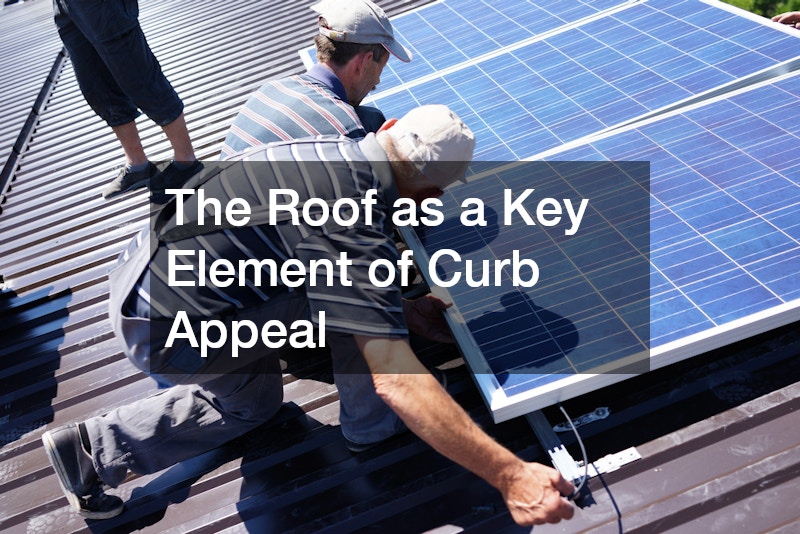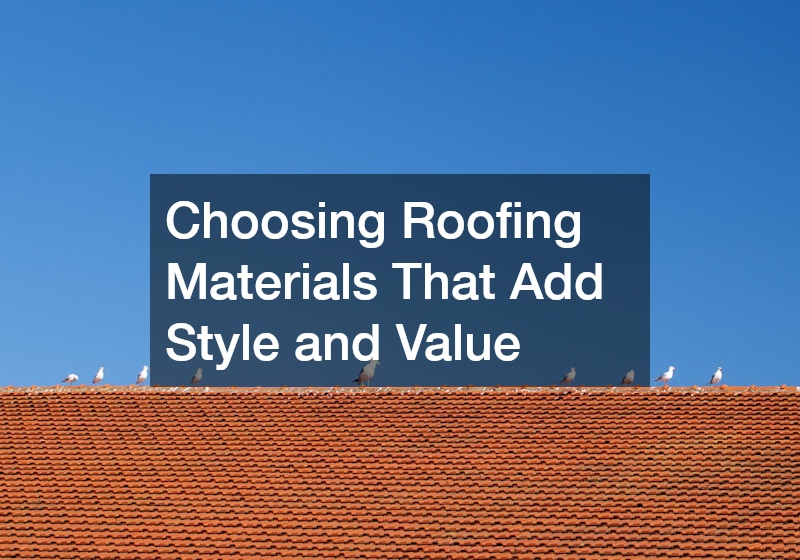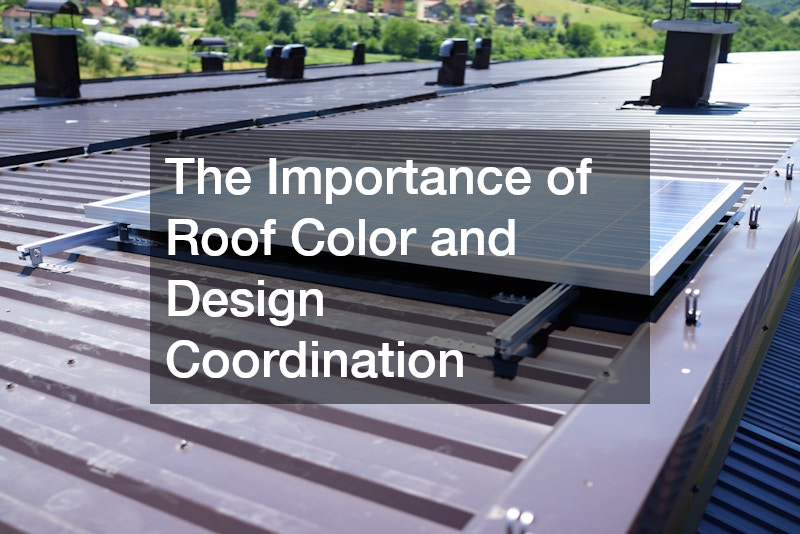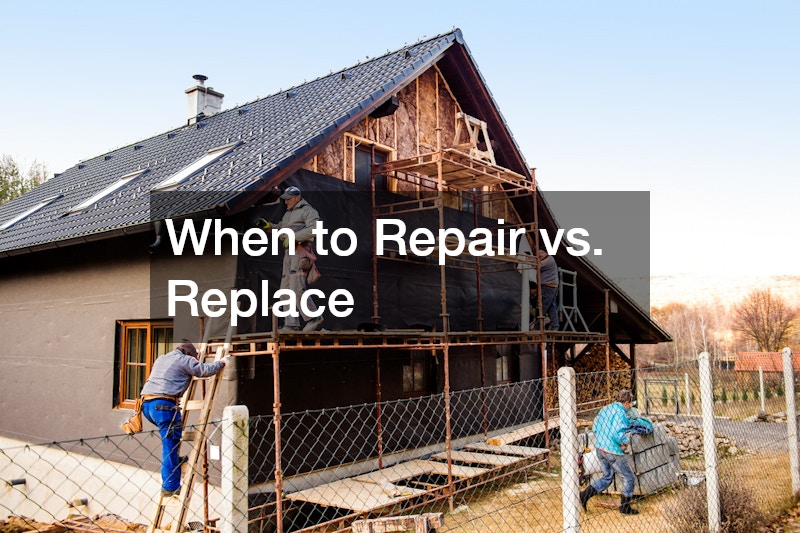Your home’s exterior tells a story — and few elements make as immediate an impact as the roof. A well-maintained, attractive roof does more than keep out the weather: it elevates your home’s presence, improves resale potential, and influences buyer perceptions long before they ever step inside. When you think about making upgrades or maintenance investments, consider that asphalt shingle roofing may be one of the most strategic choices you can make. In this guide we’ll explore how your roof directly affects curb appeal and home value, explain when to repair versus replace, and outline how to work with experts like a professional roofing specialist to maximize results.

The Roof as a Key Element of Curb Appeal
When you pull up to your home, what do you see first? The driveway, the landscaping, the siding — yes. But the roof looms large above them all. A crisp, clean roofline conveys care, permanence, and quality. Conversely, worn shingles, visible patches, or mismatched colors can signal neglect and drag down your home’s outward appeal. Choosing asphalt shingle roofing that complements the style of your house gives you flexibility of color, texture, and slope, and allows your exterior to feel cohesive and fresh.
Curb appeal is so important because buyers often make a subconscious judgment within seconds of seeing the house. A roof in good shape says, “This homeowner takes care of the property.” A roof that looks tired or poorly installed suggests deferred maintenance and raises questions about what else might be wrong. That’s where the true value of your roof comes into play.
Because asphalt shingle roofing is widely available, affordable, versatile, and relatively easy for local roofers to apply correctly, it often becomes the headline upgrade that pulls the whole exterior together.
The Connection Between Roof Condition and Home Value
Let’s move from visual impressions to hard dollars. Home value is influenced by structural integrity, anticipated maintenance, and resale readiness. A strong roof eliminates one of the biggest red flags for buyers and inspectors alike. When the roofing system is solid, it builds trust. On the other hand, signs of wear — missing granules, curling edges, moss growth, or sagging planes — all hurt perceived value.
With asphalt shingle roofing, one of the advantages is that if installation was done by a competent roofing contractor, the lifespan tends to be more reliable and fewer surprises emerge during sale inspections.
Because of this, investing in a quality installation or even a full replacement of an older roof counts as one of the best preparations you can make when maximizing your home’s worth.

Choosing Roofing Materials That Add Style and Value
Material choice matters — and luckily, asphalt shingle roofing delivers a strong combination of style, cost-effectiveness, and performance. For homeowners aiming to boost curb appeal as well as value, the right roof material can make a meaningful difference.
Here’s how to approach this decision:
Style & Compatibility
Pick shingles whose color and texture amplify your home’s architectural style. Whether it’s a classic colonial, a modern ranch, or a craftsman bungalow, asphalt shingle roofing comes in styles like three-tab, architectural/dimensional, and luxury versions, giving you design flexibility.
Durability & Lifespan
The more durable the shingles and the better the installation, the stronger the value proposition. Well-installed asphalt shingle roofing can last 20-30 years or more under the right conditions.
Cost & Return
Compared with premium materials like slate or metal, asphalt shingle roofing offers an excellent return for homeowners looking to improve value without over-capitalizing. One of the reasons it’s so ubiquitous in North America is precisely because its cost profile makes sense for both new construction and resale contexts.
Energy Efficiency & Innovations
Modern shingles include “cool roof” options and reflective granules, meaning your new asphalt shingle roofing might reduce heat absorption and improve comfort — another “plus” for potential buyers.
When you coordinate color, texture, and quality with the rest of your exterior elements — siding, trim, landscaping — you’ll see how a thoughtful roof upgrade elevates the entire street-view of your home.
Energy Efficiency and Environmental Benefits
Beyond aesthetics and structure, your roof contributes to energy performance, occupant comfort, and sustainability — factors many buyers increasingly value. Asphalt shingle roofing may not always have the longest lifespan compared to tile or slate, but high-quality options offer thermal benefits and help reduce maintenance burdens.
Some of the ways in which your roof upgrade can play a role:
-
Reflective granules reduce solar absorption, which helps lower attic temperatures and relieve stress on your HVAC system.
-
Proper ventilation and insulation underneath the roof complement the shingles and help protect the lifespan of your investment.
-
Reduced environmental impact: Many newer shingle systems are designed to be recyclable or made with recycled content, and because they’re easy to remove or replace, they tend to embed lower lifecycle cost when compared with heavier materials requiring special structure.
When buyers see a combination of good materials, recent installation, and low-maintenance expectations, your home will stand out as one that’s updated and efficient rather than one that needs “next big fix”.

The Importance of Roof Color and Design Coordination
Color, form, and texture are more than just decorative choices when it comes to roof materials — they influence perception. With asphalt shingle roofing, you have broad options: dark, light, textured, shadow-line, and so forth. If the roof color clashes with the siding or stands out awkwardly, it interrupts the aesthetic narrative of the home.
Here are a few considerations:
-
Choose a roof color that complements your home’s palette—not just the siding but trim, shutters, and front door. A mismatched roof draws attention in a negative way.
-
Textured or architectural shingles offer depth and dimension, creating shadows and visual richness that catch the eye—and thus enhance curb appeal.
-
For resale readiness, lean toward neutral, popular hues rather than highly customized or polarizing colors. A new roof in an “odd” shade may reduce the appeal for some buyers.
-
When you install asphalt shingle roofing, make sure the edges, valleys, flashings, and ridge caps are done professionally so detail work supports the design. Poor detail undermines even the best color choices.
By treating the roof as an integral design element rather than a standalone afterthought, you help your home present as cohesive, well-planned, and cared for.
Maintenance: Protecting Aesthetic and Structural Value
Even the best materials only perform when cared for. Regular maintenance extends the life of asphalt shingle roofing and helps preserve both curb appeal and home value. A roof that looks neglected or shows obvious wear invites questions and often reduces buyer confidence.
Here are key maintenance tasks:
-
Clean gutters, check downspouts. Blocked drainage can lead to shingles lifting or underside damage.
-
Inspect flashing around chimneys, vents, and dormers. If flashing fails, leaks start, and shingles degrade prematurely, so engaging a roof repair service early makes sense.
-
Remove debris, moss, and algae. While asphalt shingle roofing is fairly durable, organic growth can accelerate deterioration.
-
Ensure attic ventilation and insulation are functioning well. Heat build-up and moisture can shorten shingle life even if the top surface looks fine.
-
Schedule periodic inspections with credible providers such as local roofing companies because they can spot subtle issues before they become major.
When you log maintenance activity, any future appraiser, buyer, or inspector will recognize that the roof has been more than cosmetic—it’s been managed.

When to Repair vs. Replace
One of the more strategic decisions a homeowner must make is whether to patch, repair, or replace the roof. With asphalt shingle roofing, the question often becomes: is it time to hire a roof replacement contractor, or can you get by with a targeted fix?
Here are guidelines to help:
Signs that repairs may suffice
-
Minor damage limited to one or two roof sections (e.g., around a vent or small leak).
-
Shingles still bond, granules still in place, structure still solid, and the expectancy for the system remains reasonably high.
-
Frequent issues but isolated. In these cases, a roof repair service can bring things back in line without full replacement.
Indications replacement is wiser
-
Age of roof is near end of expected life. For asphalt shingle roofing, many 3-tab roofs start showing major wear after 15-20 years, while architectural types may go 25-30+ years.
-
Structural issues such as sag, widespread curling, missing shingles, large patches of discoloration or moss.
-
Multiple repairs already made, or recurring leaks that signal systemic issues.
-
You’re preparing to sell and want to present a clean, updated home to buyers. A new roof shows as a “value added” element rather than a deferred cost.
When you choose replacement, hiring a reputable roofing installation team makes all the difference. Poor installation undermines even good materials. Because your roof contributes to home value, investing in skilled workmanship is part of the value equation.
How Roof Upgrades Enhance Buyer Confidence
Back to the buyer’s mindset. When someone tours your home, if the roof is visibly new, well-aligned, and in harmony with the house, they feel fewer risks. A buyer thinks: “Less chance of surprise expenses. Looks maintained. Feels solid.” That mindset often translates into higher offers or faster sale.
When you choose asphalt shingle roofing, you’re choosing a widely accepted material that resonates well with appraisers, inspectors, and mortgage lenders. Because it is so common and proven, it doesn’t raise red flags like odd or exotic materials might. This helps the home pass due diligence comfortably.
Also, due to the relative simplicity of replacement for this material, future maintenance is less intimidating. That lowers the psychological friction for buyers. A roof in good shape also strengthens the overall “health” of the home profile, making it easier to justify premium pricing rather than discounting for unknowns.
Partnering with Roofing Professionals
Even the best materials won’t perform well if the job is done poorly. That’s why working with qualified experts is essential. Whether you’re hiring a roofing contractor, an installation crew, or just looking for an inspection team, use these best practices:
-
Verify licensing and insurance; check that the provider has good reviews and a track record for professional roofing work.
-
Ask for references, see past jobs, and check that they’ve done similar projects with asphalt shingle roofing.
-
Ask for written estimates, breakdowns of costs (materials vs. labor), and clarify any warranties on workmanship and materials.
-
Make sure the scope includes proper flashing, ventilation, underlayment, soffit/vent systems — high-quality asphalt shingle roofing needs the full ecosystem for best performance.
-
Confirm that the roof installers working on site are experienced and supervised, not simply day laborers.
By aligning with the right professionals, you reduce risk, ensure proper performance, and safeguard the value your investment adds to your home.
Exterior Repairs and Upkeep that Support the Roof
While the roof itself is a major component, it doesn’t exist in isolation. The performance and appearance of asphalt shingle roofing depend on how well the surrounding systems function. Think gutters, downspouts, fascia and soffit, flashing, nearby trees/branches, and drainage around the foundation.
Hiring trusted roofing services (maintenance providers) to inspect and service these adjacent systems helps protect your roof investment. For example, if gutters are clogged, water may back up and degrade shingles and flashing edges. Trees too close can drop debris, shadow the roof and promote moss growth—even perfect shingles suffer under adverse conditions.
Minimal investment in repair or upkeep often prevents major issues with the roof. That means satisfying both aesthetic and value goals: a roof that looks great and can last.
Modernizing with Smart Technology and Ventilation
While the bulk of value with asphalt shingle roofing springs from good materials and installation, modern upgrades can further boost appeal. For example:
-
Ridge vents, soffit vents, and attic fans improve airflow and help shingles last longer by reducing heat build-up.
-
Reflective or “cool” shingles reduce attic temperatures and utility costs, which adds to the value proposition for buyers concerned with energy efficiency.
-
Underlayment upgrades, proper flashing, and synthetic materials help mitigate the risk of leaks or blow-off.
Such enhancements may increase the initial cost slightly, but they reinforce the message of “this roof is thoughtful, updated, and built to last” — exactly the type of impression that supports higher value.
Small Changes That Add Big Value
Even if a full replacement isn’t on the table, small improvements to your roof can still deliver noticeable value. Particularly with asphalt shingle roofing, these incremental upgrades make sense:
-
Replace missing, curled, or discolored shingles to restore uniformity and improve curb appeal.
-
Clean off algae or moss stains so the roof appears well maintained and cared for.
-
Re-paint or replace flashing, gutters, and downspouts to ensure they match and integrate seamlessly with your shingles.
-
Remove overhanging branches or clear clutter to reduce potential damage and signal care.
These actions show prospective buyers you’ve taken care of the roof and roof system, not simply left it to chance. That confidence translates into value.
Balancing Trends with Longevity: Why Asphalt Shingles Still Shine
In a world of flashy materials and trendy upgrades, asphalt shingle roofing may seem mundane — but there’s a reason it remains the dominant residential roofing material in North America. Its balance of affordability, style, and proven performance makes it a smart choice for homeowners who want both curb appeal and long-term value.
While you might be tempted to pick an exotic material for the wow factor, you could end up limiting buyer appeal or spending more than you get back. The safest path to boosting home value is a quality roof that aligns with market expectations — and that’s exactly the territory where asphalt shingle roofing excels.
Putting It All Together: Roof + Home Value = Smart Investment
Let’s wrap up by summarizing how your roof affects both curb appeal and home value, and why asphalt shingle roofing deserves serious attention when you’re thinking of home improvement or resale:
-
A roof is one of the first things people notice — its condition can influence buyer perception and set the tone for the rest of the home.
-
Curb appeal isn’t just cosmetic; it’s a strong signal of maintenance and value. Good asphalt shingle roofing helps you present your home as cared for and ready.
-
Material choice, color, texture, installation quality, and supporting systems all factor into lifespan and performance. With asphalt shingle roofing, you have reliable, widely understood metrics.
-
Energy efficiency, durability, and minimal maintenance add intangible value that many buyers appreciate — especially when hidden issues have been resolved or prevented.
-
Repair vs. replacement decisions — when done right — align your investment with future value rather than unnecessary expense.
-
Working with quality professionals, whether a roof replacement contractor or a team of experienced local roofers, is critical to ensure that what looks good also performs well.
-
Even small upgrades and maintenance actions contribute to both aesthetic and structural health, adding to your home’s overall value profile.
-
Long-term value is best achieved when the roof upgrade is both appropriate for your home and executed well — and asphalt shingles from a roofing company delivers that sweet spot for many homeowners.
In short: your roof isn’t just protection overhead — it’s a visible signal of care, structure, and value. When you prioritize your roof among your home improvement projects, you’re investing not just in safety and comfort, but in how your home is perceived and priced in the marketplace.
